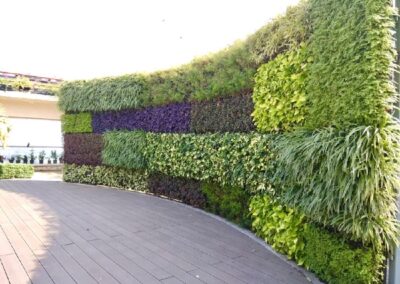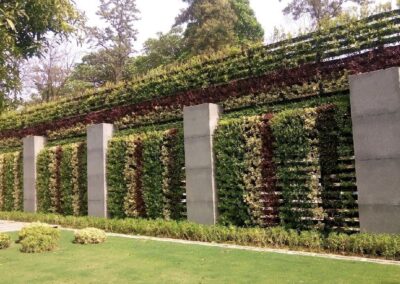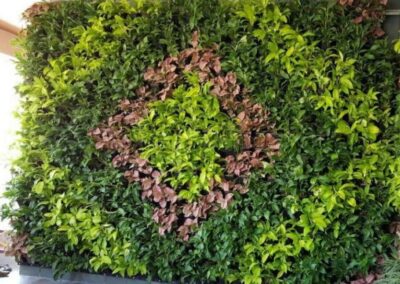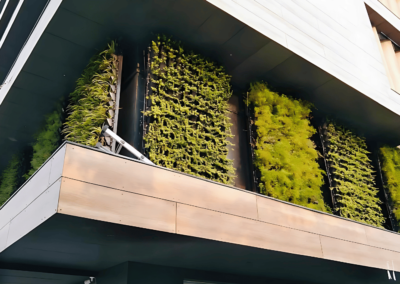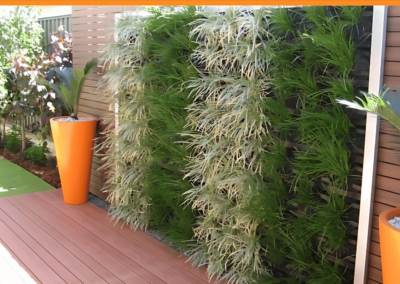Vertical Gardens
Vertical Greenery: Transforming Walls into Living Art
Vertical Gardens: Nature’s Art on Urban Canvas
Vertical Garden Installation by TGI Team: Step-by-Step
1.Consultation
- Discuss your goals and preferences.
- Assess the site for light, space, and wall condition.
2.Design and Planning
- Create a customized layout to match your space.
- Select plants based on location and purpose (aesthetic, air-purifying, or edible).
3.Material Preparation
- Source quality materials, including frames, irrigation systems, and plants.
4.Wall Preparation
- Ensure the wall is sturdy and waterproofed.
- Install the vertical garden frame securely.
5.Irrigation Setup
- Install an automated irrigation system.
- Set up drainage to prevent waterlogging.
6.Plant Installation
- Arrange plants in the frame based on the design.
- Ensure proper spacing for healthy growth.
7.Final Touches
- Test irrigation and ensure everything is stable.
- Add decorative elements if desired.
8.Maintenance and Handover
- Provide care instructions and offer maintenance services.
- Regular check-ups for plant health and system upkeep.
- With TGI, transform your walls into lush, living masterpieces effortlessly!



